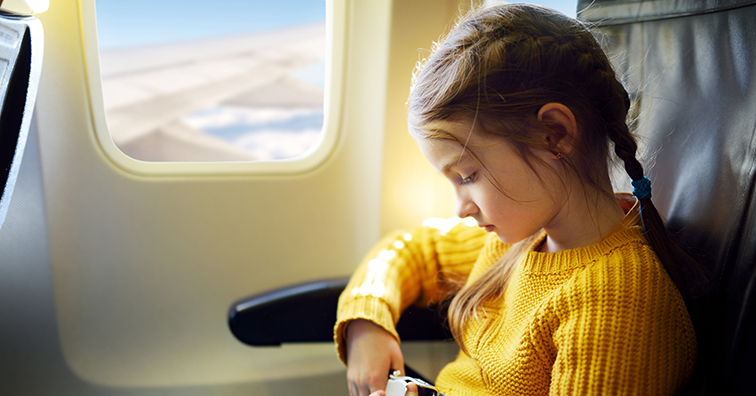
Responding to Sad
Posted by Administrator | November 11, 2017 | Blog
I’m sitting on a plane with my family, returning home from a wonderful trip in St. Martin this past spring. As we were settling in, the stewardess approached me to have a girl that was about 10 years old, sit next to me. She was travelling on her own and was assigned the seat next to my husband and son. The stewardess thought it would be wiser to have her sit next to my daughter and I. We agreed and the little girl was ushered down the aisle towards us.
As she approached, I could see her tear-stained face, disheveled hair and red nose. Obviously she had been crying and was very upset. Once she was settled into her seat next to me, she turned to face the window and continued to cry. The kind stewardesses whose care she was in, were besides themselves trying to comfort her. They kept approaching her with every form of distraction.
“Would you like a cookie sweet heart?” They brought the cookie, she cried. “How about a coloring book and crayons?” Those were handed over, she continued to cry. One desperate stewardess produced her favorite stuffed animal, one that she had since she was 8 years old, that had travelled the world with her. She proceeded to tell the little girl of how important the bear was and how great he was at making people feel better. She handed the girl her precious elixir, clear in her mind that this would solve the problem. Bear hugged, the girl cried even more!
After all the desperate attempts at comfort failed, the three stewardesses moved away, disappointed and uncomfortable. They couldn’t get the girl to stop crying. It appeared that this mission was impossible.
A minute or two of crying continued and I turned to the little girl and asked, “what’s going on sweetheart?” She told me that she had spent Spring Break in St. Martin with her Dad who was French. He lived in Paris and could not come to the United States to visit her, so this is how they got a chance to spend time together. She had a wonderful time with him and was sad because she wouldn’t see him again for a long time.
My response…I would be sad too if I had a great time with my Dad and missed him. I acknowledged “you love your Dad a lot right?” She nodded. “I’m sure you want to spend more time with him and wish you could see him more often.” Another nod, stronger this time. “Well baby, you are right to be sad, go ahead and cry.”
She looked at me quizzically, burst in to tears, hugged me, cried for 3 minutes more. Then she stopped and said, “thank you, I feel better!” We then spent the rest of the flight with her showing me her vacation pictures and nail polish designs…she was quite the nail artist. When the stewardesses walked by, they were so relieved to see that the girl had stopped crying. Every voice went up an octave in joy as they commented about her being ‘happy now.’

Here’s a case where hidden reactions stop us from responding. The adults whose care this child was in could not SEE that they were uncomfortable with her sadness. They were, excuse the pun, in flight (the reaction, that is), trying to run away from her sad and attempting to convince her to be happy. It wasn’t just that they wanted her to feel better, it was that they wanted to feel better. Her sadness disarmed them.
Often, we become uncomfortable when people we care about are upset, angry, sad and when confronted with this, we try everything in our power to fix it. We just want them better so we can be better. We are running away or fleeing (also called flight). It’s a brainstem reaction…a hidden, sneaky one, but a reaction nonetheless.
In this situation, responsiveness was just allowing the little girl to be sad. No fixing, no running, no trying to stop it. It was honoring her story and letting her know that being sad was okay. The moment she was given permission to be sad, she experienced it and then moved on. They all wanted her to move on and she could, but she needed a pit stop in sadness first. She needed the chance to express what she was feeling without pressure to stop for someone else’s sake.
Reactivity comes in all kinds of forms and too often, we want those around us to be happy. Not just our children, our partners, friends, co-workers. Pay attention, what happens in you when someone you care about is upset? Notice your need to do something? Do you try to fix it? To change it? That’s a reaction.
What does that reaction cost? It costs you relationships. It’s you not really showing up for your people. It’s you telling your children with your behavior that you need them to be happy! What pressure. What fakeness. It’s you not really being present and helpful for your partners or friends. It’s you wanting to do anything to please, fix or change the situation because YOU are uncomfortable.
You don’t want that…you want to respond. So pay attention, look for this hidden reaction in your life. Remember, you can’t change, what you can’t see.



